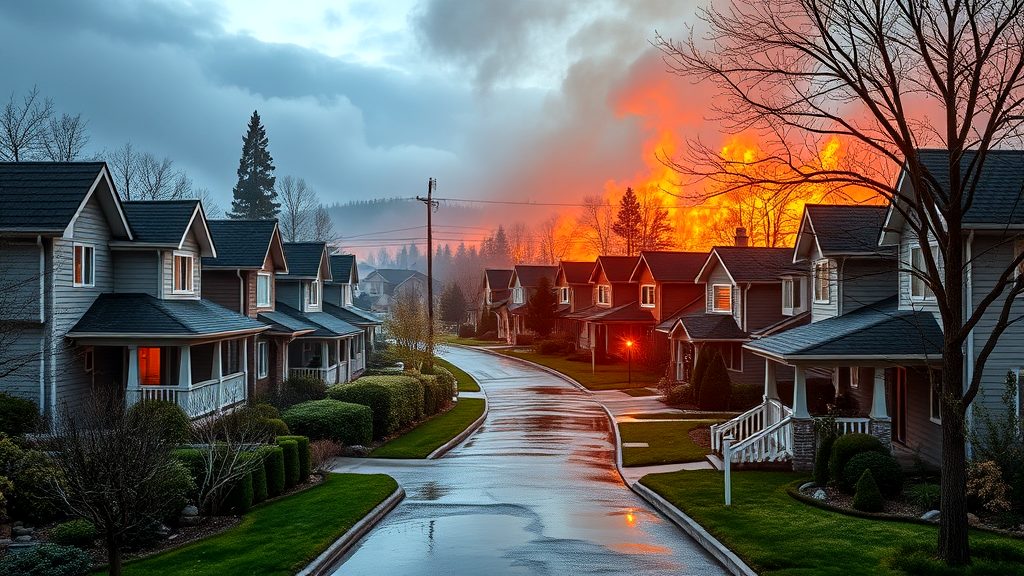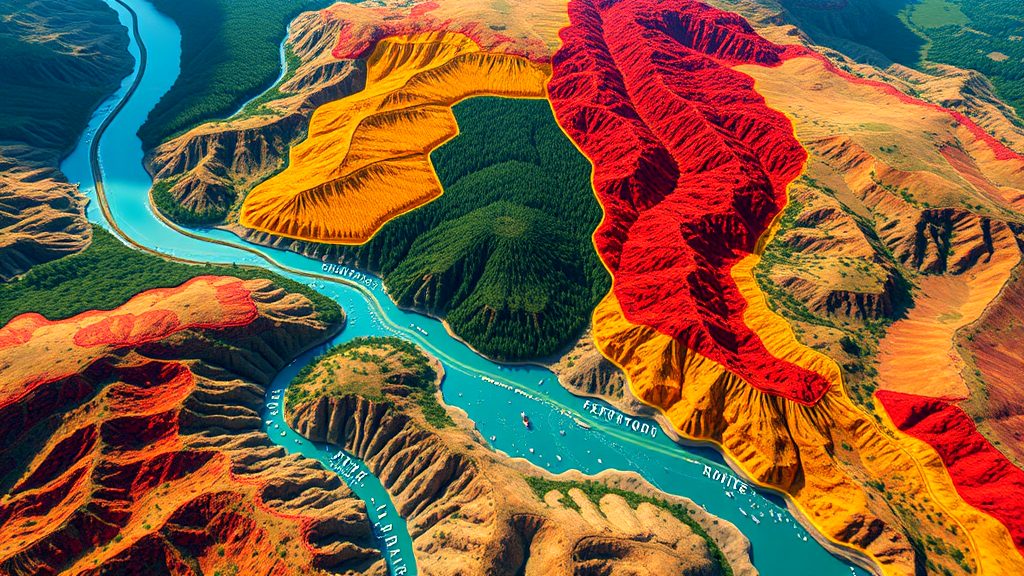Understanding Natural Hazard Disclosure
Ever wondered about natural hazard disclosure? It’s key in buying homes. These reports show risks, like floods and fires. They help keep buyers safe. Companies like myNHD and First American make them. They give detailed hazard disclosure statements. This helps meet legal rules.
A wildfire disclosure report is super important, too. It shows if a home is in a danger zone. Knowing about a natural hazard area can save money and stress. These disclosure statements protect everyone. Accurate hazard disclosure reports mean better choices.
Understanding natural hazards is like having a roadmap. It guides you safely through home buying. So, next time you look at a house, think about these reports!
Key Takeaways
-
Natural hazard disclosure reports help keep home buyers informed about risks like floods and fires.
-
A hazard disclosure statement is a must for real estate transactions to meet legal rules.
-
Companies like myNHD offer detailed hazard disclosure statements, ensuring peace of mind for buyers.
-
Accurate hazard disclosure reports protect everyone and guide better decisions in home buying.

The Importance of Accurate Hazard Disclosure Reports
Accurate hazard disclosure can save you from unexpected surprises in real estate. Imagine buying your dream home, and suddenly, you’re knee-deep in unforeseen issues. That’s where precise natural hazard disclosure steps in. It lays everything bare, transferring any risks from sellers to reliable third-party providers. This transparency not just protects sellers and buyers but also smoothens the transaction process.
Think of it as the protective armor in the property buying realm. Companies like myNHD and First American equip stakeholders with this armor. They stand behind their reports with robust Errors & Omissions insurance. This isn’t just a piece of paper; it’s your peace of mind. The Safe Harbor Provision ensures this isn’t a gamble, but a well-thought-out move.
The real clincher? The expertise backing these reports. Geologists and geo-spatial analysts dive deep, uncovering every nook and cranny of potential hazards. Ever thought about the impact of seismic activity on your future home? These experts have. They guide you through the maze of flood zones, fire risks, and seismic jolts. Each factor can sway insurance premiums or property value.
A natural hazard disclosure is your map in this terrain, pointing out potential pitfalls before they become a problem. Just like a lighthouse guiding ships, it keeps you on the safest course. Buyers can make informed decisions, having all the facts at their fingertips. And sellers? They sleep easy knowing they’ve fulfilled their duties.
Intrigued by how industry leaders manage this process? Property I.D. on LinkedIn is a treasure trove of insights. They shine a light on the behind-the-scenes efforts to bring clarity and protection to your property journey. Ultimately, these reports are the unsung heroes, ensuring every step is secure and informed.
Top 3 Natural Hazards Affecting Property Value
When considering the most impactful hazards on property values, three stand out. Flood zones, fire hazard areas, and seismic activity are major concerns for property buyers and sellers. Each of these hazards can dramatically influence property values and insurance costs. They often require special attention in a natural hazard disclosure.
Flood zones, for instance, bring with them the risk of water damage and potential development restrictions. Buyers often hesitate when properties are in these zones due to high insurance costs. Similarly, fire hazard zones can cause insurance premiums to skyrocket and may deter potential buyers. Areas marked as High or Very High Fire Hazard Severity Zones are particularly tricky. These areas can be a tough sell unless precautions are in place.
Seismic activity is another hazard that can’t be ignored. Homes in earthquake-prone areas might need to meet specific building codes. These codes can increase construction costs, making properties less attractive. This is where a thorough natural hazard disclosure becomes invaluable. It outlines all these risks, providing buyers with the transparency they need.
-
Consider insurance costs and premiums in risk-prone areas.
-
Look into local building codes and compliance needs.
-
Be mindful of potential development restrictions.
-
Evaluate how these hazards impact marketability.
-
Check for any necessary retrofitting for seismic safety.
-
Investigate available mitigation measures for flood and fire risks.
-
Understand local geographic and environmental studies.
The hazard disclosure statement plays a crucial role in these transactions. It transfers liability from sellers to third-party providers, ensuring everyone is informed. Buyers can sleep easy, knowing they understand the risks. Sellers can rest assured they’ve met their obligations. Isn’t it comforting to have everything laid out clearly?

Conclusion
Accurate Natural Hazard Disclosures are like a safety net. They protect buyers and sellers from surprises. Imagine buying a house and later finding it’s in a flood zone! That would be a nightmare, right?
Knowledge is power when buying property. Reports from experts like myNHD give buyers the facts. This helps them make smart choices about where to live. Plus, it keeps everyone on the same page.
Remember, homes are big investments. So, getting a proper hazard report is a smart move. It’s like having a flashlight in the dark—guiding you safely through the home-buying jungle. It’s always better to be safe than sorry!
FAQ
-
What is a Natural Hazard Disclosure (NHD) report?
An NHD report identifies potential natural hazards affecting a property. It includes details about risks like flood zones and fire areas. This report helps buyers understand possible risks before purchasing.
-
Why are accurate hazard disclosure reports important?
Accurate reports protect sellers and agents by transferring liability to third-party providers. This is called the “Safe Harbor Provision.” It ensures everyone plays by the rules and buyers make informed choices.
-
What natural hazards can impact property value?
Three big ones are flood zones, fire hazard areas, and seismic activity. Each can change how much a property is worth, its insurance, and what can be built.
-
How do companies like myNHD and First American help with NHD?
They provide detailed reports covering all necessary hazards. They also use experts to ensure the information is precise. This makes sure sellers, agents, and buyers are well-informed and protected.
-
Can NHD reports change a buyer’s decision?
Yes, they can. Knowing about hazards like seismic activity might make buyers think twice. But it also helps them prepare and decide if the risk is worth it.


 Facebook
Facebook
 X
X
 Pinterest
Pinterest
 Copy Link
Copy Link



